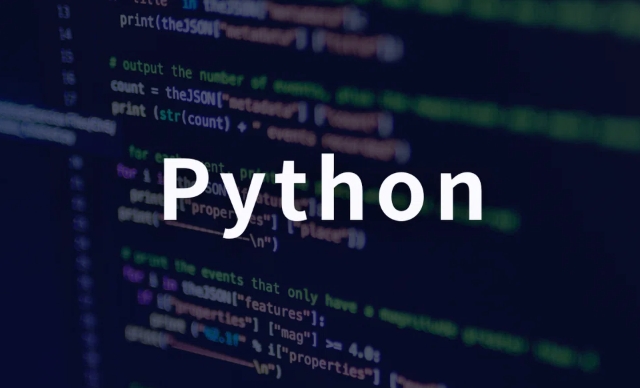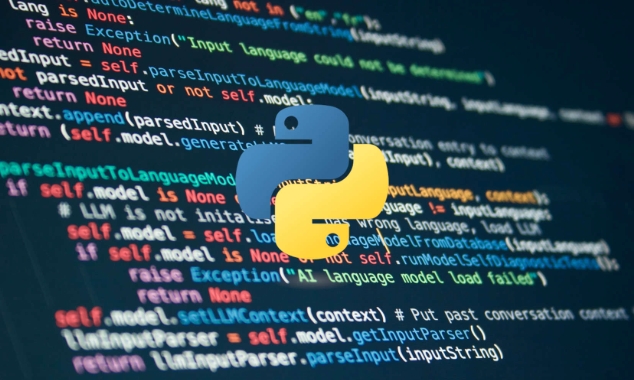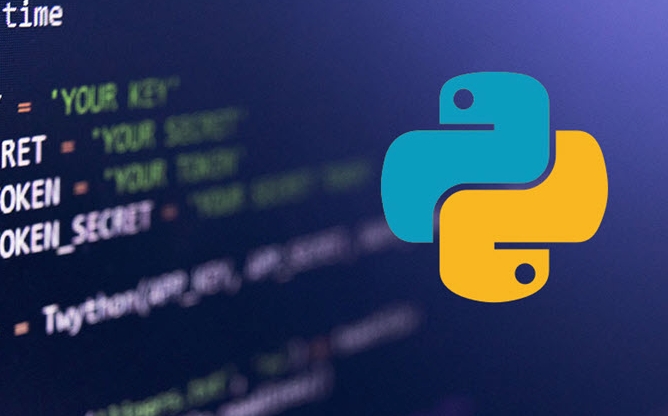shutil.rmtree() is a function in Python that recursively deletes the entire directory tree, and can delete specified folders and all contents. 1. Basic usage: Use shutil.rmtree(path) to delete the directory, and you need to handle exceptions such as FileNotFoundError, PermissionError, etc. 2. Practical application: You can clear folders containing subdirectories and files in one click, such as temporary data or cached directories. 3. Notes: The deletion operation is not restored; FileNotFoundError is thrown when the path does not exist; it may fail due to permissions or file occupation. 4. Optional parameters: errors can be ignored by ignore_errors=True, or custom error handling functions can be specified through onerror. 5. Security tips: Before deletion, use os.path.exists() to check whether the directory exists to avoid exceptions. This function is suitable for cleaning temporary files or test data. Careful to prevent accidentally deleting important files when using them.

shutil.rmtree() is a function in Python that recursively deletes the entire directory tree. It can delete specified folders and all files and subfolders inside them, similar to rm -rf in the command line.

Here is a simple and practical example of usage:
? Basic usage examples
import shutil
# The directory path to delete dir_to_remove = 'test_folder/'
try:
shutil.rmtree(dir_to_remove)
print(f"directory '{dir_to_remove}' has been deleted successfully.")
except FileNotFoundError:
print(f"directory '{dir_to_remove}' does not exist.")
except PermissionError:
print(f"No permission to delete directory '{dir_to_remove}'.")
except Exception as e:
print(f"Error deleting directory: {e}")?? Practical application scenarios
Suppose you have a temporary folder temp_data/ that contains multiple subfolders and cache files:

temp_data/
├── cache/
│ └── data.tmp
├── logs/
│ └── app.log
└── temp_images/
└── img.pngYou can delete the entire structure with one click:
import shutil
shutil.rmtree('temp_data')
print("Temporary data cleared")?? Notes
- Unrecoverable : This operation will permanently delete the file and will not enter the recycling bin.
- The path must exist : If the directory does not exist,
FileNotFoundErrorwill be thrown by default. - Permissions Issue : If a file is being used or read-only, it may cause failure (especially on Windows).
- Optional parameters
ignore_errorsandonerror:
# Ignore errors (not recommended to use at will in production environment)
shutil.rmtree('temp_data', ignore_errors=True)
# Or custom error handling function def handle_error(func, path, exc_info):
print(f"Delete {path} failed: {exc_info[1]}")
shutil.rmtree('temp_data', oneerror=handle_error)? Tips: Confirm whether it exists before deletion
import os
import shutil
folder = 'my_old_project'
if os.path.exists(folder):
shutil.rmtree(folder)
print(f"Deleted {folder}")
else:
print(f"{folder} does not exist, no need to delete it.") Basically that's it. shutil.rmtree() is simple and efficient, suitable for cleaning temporary directories, test data or project construction products. Be careful not to delete important files by mistake when using them.

The above is the detailed content of python shutil rmtree example. For more information, please follow other related articles on the PHP Chinese website!

Hot AI Tools

Undress AI Tool
Undress images for free

Undresser.AI Undress
AI-powered app for creating realistic nude photos

AI Clothes Remover
Online AI tool for removing clothes from photos.

Clothoff.io
AI clothes remover

Video Face Swap
Swap faces in any video effortlessly with our completely free AI face swap tool!

Hot Article

Hot Tools

Notepad++7.3.1
Easy-to-use and free code editor

SublimeText3 Chinese version
Chinese version, very easy to use

Zend Studio 13.0.1
Powerful PHP integrated development environment

Dreamweaver CS6
Visual web development tools

SublimeText3 Mac version
God-level code editing software (SublimeText3)

Hot Topics
 How to use PHP combined with AI to achieve text error correction PHP syntax detection and optimization
Jul 25, 2025 pm 08:57 PM
How to use PHP combined with AI to achieve text error correction PHP syntax detection and optimization
Jul 25, 2025 pm 08:57 PM
To realize text error correction and syntax optimization with AI, you need to follow the following steps: 1. Select a suitable AI model or API, such as Baidu, Tencent API or open source NLP library; 2. Call the API through PHP's curl or Guzzle and process the return results; 3. Display error correction information in the application and allow users to choose whether to adopt it; 4. Use php-l and PHP_CodeSniffer for syntax detection and code optimization; 5. Continuously collect feedback and update the model or rules to improve the effect. When choosing AIAPI, focus on evaluating accuracy, response speed, price and support for PHP. Code optimization should follow PSR specifications, use cache reasonably, avoid circular queries, review code regularly, and use X
 PHP calls AI intelligent voice assistant PHP voice interaction system construction
Jul 25, 2025 pm 08:45 PM
PHP calls AI intelligent voice assistant PHP voice interaction system construction
Jul 25, 2025 pm 08:45 PM
User voice input is captured and sent to the PHP backend through the MediaRecorder API of the front-end JavaScript; 2. PHP saves the audio as a temporary file and calls STTAPI (such as Google or Baidu voice recognition) to convert it into text; 3. PHP sends the text to an AI service (such as OpenAIGPT) to obtain intelligent reply; 4. PHP then calls TTSAPI (such as Baidu or Google voice synthesis) to convert the reply to a voice file; 5. PHP streams the voice file back to the front-end to play, completing interaction. The entire process is dominated by PHP to ensure seamless connection between all links.
 Completed python blockbuster online viewing entrance python free finished website collection
Jul 23, 2025 pm 12:36 PM
Completed python blockbuster online viewing entrance python free finished website collection
Jul 23, 2025 pm 12:36 PM
This article has selected several top Python "finished" project websites and high-level "blockbuster" learning resource portals for you. Whether you are looking for development inspiration, observing and learning master-level source code, or systematically improving your practical capabilities, these platforms are not to be missed and can help you grow into a Python master quickly.
 How to use PHP to develop product recommendation module PHP recommendation algorithm and user behavior analysis
Jul 23, 2025 pm 07:00 PM
How to use PHP to develop product recommendation module PHP recommendation algorithm and user behavior analysis
Jul 23, 2025 pm 07:00 PM
To collect user behavior data, you need to record browsing, search, purchase and other information into the database through PHP, and clean and analyze it to explore interest preferences; 2. The selection of recommendation algorithms should be determined based on data characteristics: based on content, collaborative filtering, rules or mixed recommendations; 3. Collaborative filtering can be implemented in PHP to calculate user cosine similarity, select K nearest neighbors, weighted prediction scores and recommend high-scoring products; 4. Performance evaluation uses accuracy, recall, F1 value and CTR, conversion rate and verify the effect through A/B tests; 5. Cold start problems can be alleviated through product attributes, user registration information, popular recommendations and expert evaluations; 6. Performance optimization methods include cached recommendation results, asynchronous processing, distributed computing and SQL query optimization, thereby improving recommendation efficiency and user experience.
 How to develop AI intelligent form system with PHP PHP intelligent form design and analysis
Jul 25, 2025 pm 05:54 PM
How to develop AI intelligent form system with PHP PHP intelligent form design and analysis
Jul 25, 2025 pm 05:54 PM
When choosing a suitable PHP framework, you need to consider comprehensively according to project needs: Laravel is suitable for rapid development and provides EloquentORM and Blade template engines, which are convenient for database operation and dynamic form rendering; Symfony is more flexible and suitable for complex systems; CodeIgniter is lightweight and suitable for simple applications with high performance requirements. 2. To ensure the accuracy of AI models, we need to start with high-quality data training, reasonable selection of evaluation indicators (such as accuracy, recall, F1 value), regular performance evaluation and model tuning, and ensure code quality through unit testing and integration testing, while continuously monitoring the input data to prevent data drift. 3. Many measures are required to protect user privacy: encrypt and store sensitive data (such as AES
 python seaborn jointplot example
Jul 26, 2025 am 08:11 AM
python seaborn jointplot example
Jul 26, 2025 am 08:11 AM
Use Seaborn's jointplot to quickly visualize the relationship and distribution between two variables; 2. The basic scatter plot is implemented by sns.jointplot(data=tips,x="total_bill",y="tip",kind="scatter"), the center is a scatter plot, and the histogram is displayed on the upper and lower and right sides; 3. Add regression lines and density information to a kind="reg", and combine marginal_kws to set the edge plot style; 4. When the data volume is large, it is recommended to use "hex"
 How to use PHP to implement AI content recommendation system PHP intelligent content distribution mechanism
Jul 23, 2025 pm 06:12 PM
How to use PHP to implement AI content recommendation system PHP intelligent content distribution mechanism
Jul 23, 2025 pm 06:12 PM
1. PHP mainly undertakes data collection, API communication, business rule processing, cache optimization and recommendation display in the AI content recommendation system, rather than directly performing complex model training; 2. The system collects user behavior and content data through PHP, calls back-end AI services (such as Python models) to obtain recommendation results, and uses Redis cache to improve performance; 3. Basic recommendation algorithms such as collaborative filtering or content similarity can implement lightweight logic in PHP, but large-scale computing still depends on professional AI services; 4. Optimization needs to pay attention to real-time, cold start, diversity and feedback closed loop, and challenges include high concurrency performance, model update stability, data compliance and recommendation interpretability. PHP needs to work together to build stable information, database and front-end.
 How to develop AI-based text summary with PHP Quick Refining Technology
Jul 25, 2025 pm 05:57 PM
How to develop AI-based text summary with PHP Quick Refining Technology
Jul 25, 2025 pm 05:57 PM
The core of PHP's development of AI text summary is to call external AI service APIs (such as OpenAI, HuggingFace) as a coordinator to realize text preprocessing, API requests, response analysis and result display; 2. The limitation is that the computing performance is weak and the AI ecosystem is weak. The response strategy is to leverage APIs, service decoupling and asynchronous processing; 3. Model selection needs to weigh summary quality, cost, delay, concurrency, data privacy, and abstract models such as GPT or BART/T5 are recommended; 4. Performance optimization includes cache, asynchronous queues, batch processing and nearby area selection. Error processing needs to cover current limit retry, network timeout, key security, input verification and logging to ensure the stable and efficient operation of the system.






